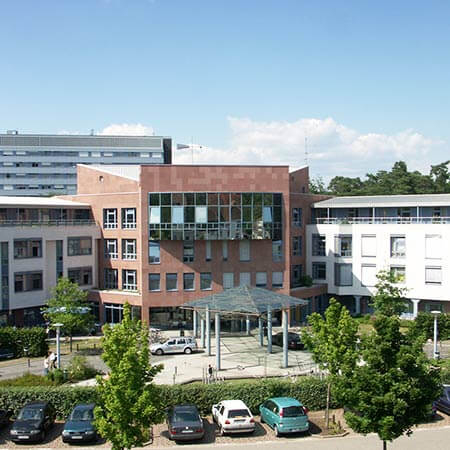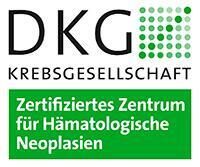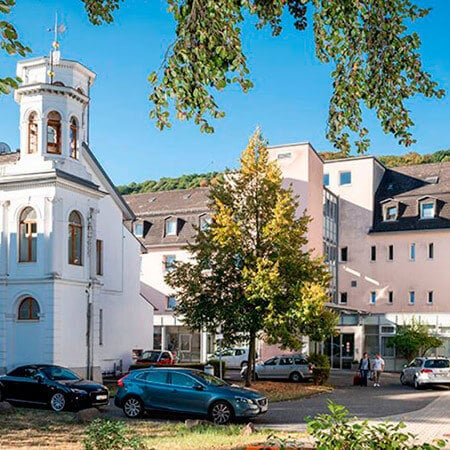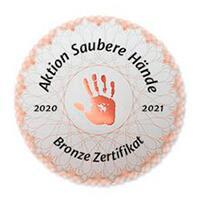Content
- How common is Wilms tumor in children?
- What are the symptoms of Wilms tumor?
- How is Wilms tumor diagnosed?
- How is the treatment plan drawn up?
- How is Wilms tumor treated?
- What are the chances of recovering from Wilms tumor?
- Where to undergo treatment for Wilms tumor?
- How much does Wilms tumor treatment cost?
- How to go for Wilms tumor treatment abroad?
Nephroblastoma, also known as Wilms tumor, is a highly treatable early-stage form of kidney cancer that is most common in early childhood. The statistics of cancer treatment show excellent results – about 90% of children are cured of kidney cancer, which is undoubtedly the great merit of experienced medical specialists who return the most valuable thing to parents – the health of their children.
How common is Wilms tumor in children?
Nephroblastoma begins in a child's body during the embryonic period. Wilms tumor can be accompanied by other congenital pathologies. This disease occurs with the same frequency in both girls and boys.
In children, Wilms tumor occurs in about 6% of cases taking into account all cancers. Wilms tumor is considered one of the most widespread childhood cancers.
Since Wilms tumor is embryonic cancer, which means that it originates in a developing infant, the cancer is diagnosed in young children. In children under the five years of age, there are half of diagnosed cases of Wilms tumor; 16% of infants are diagnosed with this kidney cancer as well.
The disease usually develops in one of the kidneys, while affecting the work of the entire urinary tract.
What are the symptoms of Wilms tumor?
In the early stages of Wilms tumor a child may not experience any discomfort. Symptoms are nonspecific, but as the tumor grows, they become more pronounced. As cancer develops, it can manifest itself with malaise, weakness, and low-grade fever. The first permanent syndrome of cancer includes palpation of the tumor.
An overgrown tumor can compress surrounding tissues and organs. Because of this, fluid accumulates in the abdomen, ascites develops, veins appear on the abdomen. At this stage of cancer, abdominal pain appears, but the child cannot say clearly where it hurts.
Symptoms of Wilms tumor may also include increased blood pressure and presence of blood in the urine.
How is Wilms tumor diagnosed?
If a Wilms tumor is suspected, it is necessary to conduct various tests and studies, firstly, to confirm the diagnosis; secondly, to find out the specific form of nephroblastoma and to assess the effects of the disease on the body. Having answers to these questions, doctors can begin planning the optimal treatment scheme and give a prognosis.
Ultrasound scan, MRI, and CT scan are important in establishing the diagnosis. With their help, Wilms tumor can be distinguished from other forms of kidney cancer with a precision up to 90%. With imaging techniques, doctors accurately estimate the degree of cancer spread throughout the body.
Sometimes it is impossible to reliably distinguish Wilms tumor from other diseases using only the imaging techniques. Then an additional examination is prescribed, for example, an MIBG scan, certain tumor marker tests, or blood tests. To identify the presence of metastases that are usually found in the lungs, an X-ray or computed tomography of the chest is prescribed.
Depending on the treatment tactics, additional tests are done before the cancer treatment start in order to check how certain organs are working. So, especially before the course of chemotherapy, the functioning of the heart and kidneys in children is assessed. If any side effects occur during treatment, they are compared with the initial results of this examination. With the help of such preliminary diagnostics, the treatment plan can be adjusted.
During cancer treatment, diagnostics is also carried out in the form of tissue biopsy. For example, when the preoperative course of chemotherapy is completed (it lasts from 4 to 6 weeks), a biopsy of the tumor is performed. A histological examination of the tumor is also performed after surgery, when the tumor itself is removed. Only in the exceptional cases a biopsy is performed to obtain a sample of tumor tissue even before starting the treatments.
How is the treatment plan drawn up?
After the final diagnosis is made, doctors draw up a treatment plan. Specialists who take care of the child draw up an individual treatment program, the so-called risk-adapted treatment.
The most important prognostic factors in children with Wilms tumor include how much the cancer has spread throughout the body at the time of diagnosis making, the specifics of nephroblastoma, the levels of response to different types of treatment of nephroblastoma.
Various factors (depending on their significance) are taken into account when drawing up a treatment plan. For each child, an individual therapeutic tactics is worked out to obtain the most effective treatment results.
How is Wilms tumor treated?
The use of combination therapy, which mainly consists of surgery and chemotherapy, and sometimes radiotherapy, shows the best results in the treatment of children with nephroblastoma.
A child is treated with chemotherapy primarily to reduce the tumor volume, so that the tumor becomes more resectable. For some children, treatment of nephroblastoma begins with surgical intervention aimed at removing the tumor and possible metastases. Typically, chemotherapy continues (or begins) after surgery. Depending on whether there are any cancer cells left after surgery, additional irradiation of the tumor focus can be prescribed.
Treatment tactics is chosen in each case individually, depending on the data of histological analysis. The more advanced the cancer is and the more malignant the tumor is, the more intensive and complex cancer treatment is. Its goal is also to minimize the risks of complications development, as well as the risks of long-term negative consequences and side effects the child may experience after treatments.
There are the recommendations with the specific phases of cancer treatment in modern therapeutic guidelines. They mainly include preoperative chemotherapy, surgery, postoperative chemotherapy, and radiotherapy.
Chemotherapy (preoperative course)
All children aged from 6 months to 16 years receive a preoperative course of chemotherapy at the beginning of their cancer treatments, as chemotherapy before surgery has proved to reduce the neoplasm’s volume significantly. Therefore, after chemotherapy, the tumor becomes easier to operate on. Chemotherapy also decreases the chance of tumor rupture during surgery and prevents cancer cells from spreading.
Medications that inhibit cell growth (cytostatics) are used to eliminate the Wilms tumor. In cases when cancer is present in both kidneys, anthracycline drugs are prescribed additionally.
The preoperative course of chemotherapy for Wilms tumor usually lasts four weeks. If a child has metastases or bilateral nephroblastoma, he receives an individually assigned course of therapy.
In infants younger than 6 months and adolescents over 16, chemotherapy before surgery isn’t carried out. In these age groups, children usually develop different forms of kidney cancer, which, in turn, are treated differently, usually without chemotherapy. In these children, performing surgery to obtain a tumor sample is of key importance. When specifics of kidney cancer is identified, a treatment strategy is chosen, again, taking into account the possible side effects.
Surgery
During surgical treatment, the doctor removes the maximum volume of cancerous tissue and obtains material for histological analysis to find out the specifics of tumor growth.
Kind of surgery chosen for the procedure depends on the affection of one or two kidneys by cancer. If Wilms tumor hasn’t spread to both of kidneys, then, as a rule, the tumor removal is performed; the kidney in which it grew is also excised.
After the procedure, the preserved kidney of a child can gradually take over all the functioning. In such cases, it is vital that the remaining kidney isn’t damaged by the chronic inflammation caused by a tumor. In bilateral nephroblastoma, when both kidneys are involved in a malignant process, i.e. cancer affects both kidneys, attending physicians make an individual decision on the operation. They usually choose a treatment strategy that will preserve at least one of the kidneys.
Chemotherapy (postoperative course)
After the surgical intervention, chemotherapy continues as a postoperative course. Only children with one kidney being completely removed (usually early-stage Wilms tumor) don’t need chemotherapy after surgery.
For other children, chemotherapy continues. How extensive the course will be is established on the basis of the volume of the tumor at the time of surgery and the degree of its spread in the body.
Tumors without distant metastases continue to be treated with a combination of cytostatics. If the tumor is highly aggressive, several more drugs are prescribed along with a combination of cytostatics.
The course of chemotherapy can last one month (if the child has a Wilms tumor of moderate malignancy), but it also can last from 8 to 10 months (if the tumor grade is very high, or there are residual metastases after surgery).
Radiation therapy
The development of new effective combinations of cytostatics and a preoperative course of chemotherapy made it possible to exclude radiotherapy in most cases of Wilms tumor, but some children still require it.
Only the tumor area is irradiated in such cases. If the child still has remnants of the tumor, then the radiation dose is increased, and the tumor area is irradiated targetedly. If the tumor rupture occurs during surgery, radiotherapy must be prescribed. If a child still has metastases in the lungs after a preoperative course of chemotherapy and surgery, then additional radiotherapy to the chest is prescribed.
What are the chances of recovering from Wilms tumor?
The chances of curing the child of Wilms tumor are very good. Thanks to highly accurate modern diagnostic methods and standardized combination therapy protocols, approximately 90% of patients recover.
For each child, the prognosis depends primarily on the type of Wilms tumor and how far the disease had spread by the time of diagnosis making.
Usually, the chances of recovery are higher the less malignant the tumor is and the earlier the diagnosis is made. More than 90% of children who do not have metastases are cured.
Children with an aggressive Wilms tumor have a less favorable prognosis. However, children with advanced Wilms tumors may have a good chance of recovery under certain conditions. In patients with distant metastases (stage IV), the chances of recovery depend primarily on how the disease responds to chemotherapy. If, after a preoperative course of chemotherapy and surgery, it is possible to destroy the tumor focus completely, then up to 80% of patients can be cured.
Where to undergo treatment for Wilms tumor?
Hospitals in Germany, Turkey, India, and Israel are recommended for nephroblastoma treatment. Leading specialists in the field of pediatric oncology, experienced in the treatment of Wilms tumor, work there.
Leading hospitals for Wilms tumor treatment are:
- University Hospital Saarland Hamburg, Germany
- MediClin Robert Janker Clinic, Germany
- Medias Cancer Clinic Burghausen, Germany
- Rambam Health Care Campus Haifa, Israel
- Medicana International Ankara Hospital, Turkey
- Primus Super Speciality Hospital New Delhi, India
Feel free to visit the Booking Health website to know more about the hospitals for the treatment of Wilms tumor.
How much does Wilms tumor treatment cost?
In each case of nephroblastoma, doctors prescribe an individual set of procedures that can consist of one or several courses of chemotherapy, surgery, or radiation therapy, and the number of procedures can vary significantly. All of these determine the price for the treatment of kidney cancer.
Generally, the cost of treatment with tumor resection in Germany starts with 16,564 EUR; in Turkey – with 12,008 EUR; in India – with 23,842 EUR; in Israel – with 26,249 EUR.
The cost of treatment with chemotherapy in Germany starts with 9,618 EUR; in Turkey – with 5,845 EUR; in India – with 11,524 EUR; in Israel – with 11,900 EUR.
The cost of treatment with radiation therapy in Germany starts with 15,313 EUR and in Turkey – with 15,457 EUR.
To find out the prices for procedures or the overall cost of treatment, leave a request on the Booking Health website.
How to go for Wilms tumor treatment abroad?
Undoubtedly, cancer treatment abroad shows positive effects more often. This is due to many factors, including the level of medicine development, the availability of high-quality equipment in the hospitals, and the qualifications of oncologists.
To make the idea of treatment abroad a bit more friendly, you can consider using the services of a medical tourism agency.
Booking Health is the leading company specializing in medical tourism that carefully plans your treatment abroad. Booking Health offers the selection of the world’s best hospitals, visa support, translation of medical documentation, services of an interpreter, and a stable cost of the treatment programs.
If your child needs to undergo nephroblastoma treatment abroad, you can get a consultation from a medical advisor by filling out the request form on the Booking Health website.
Authors: Dr. Vadim Zhiliuk, Dr. Sergey Pashchenko











